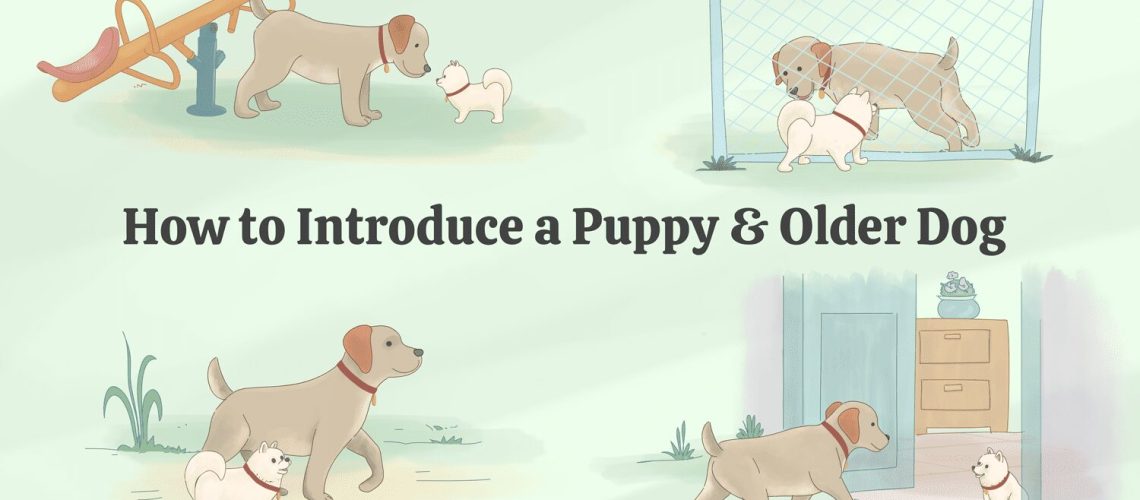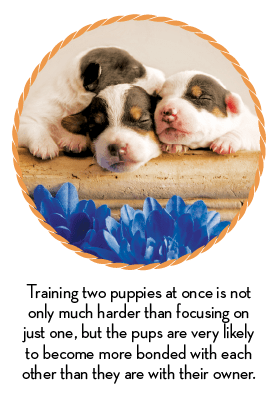Key Takeaways:
- Introduce the dogs in a neutral and controlled environment to minimize potential conflicts.
- Establish clear rules and boundaries for both dogs to prevent any dominance issues.
- Gradually increase the amount of time the dogs spend together to allow them to become familiar with each other's presence.
- Provide separate spaces and resources for each dog to avoid competition and territorial disputes.
- Consistently reward positive behavior and discourage negative behavior through positive reinforcement training techniques.
Are you a dog lover who dreams of having more than one furry companion? Imagine the joy of watching your dogs play together, cuddle up for nap time, and keep each other company when you're not home. But introducing a new dog into your household can be challenging. That's where learning how to train your dog to live with another dog becomes essential. Not only will this knowledge help you create a harmonious environment for both dogs, but it will also strengthen the bond between them and prevent any potential conflicts. So, whether you're planning to add a new addition to your family or simply want to improve the relationship between your current pups, this guide will provide you with practical tips and strategies to ensure a smooth transition. Get ready to unleash the secrets of successful dog cohabitation!
Steps to Follow When Introducing a New Dog to Your Home
Step 1: Prepare your home
Before bringing a new dog into your home, it's important to make sure you have everything they need. This includes a comfortable bed, food and water bowls, toys, and a designated potty area. Set up these items in advance so that your new dog feels welcome right away.
Step 2: Introduce scents
Dogs rely heavily on their sense of smell, so introducing scents can help them get acquainted with each other before meeting face-to-face. You can do this by rubbing a towel on one dog and then placing it near the other dog's sleeping area. This allows them to become familiar with each other's scent.
Step 3: Controlled introductions
When it's time for the dogs to meet, make sure to do it in a controlled environment. Use leashes and have two people present for added safety. Allow the dogs to sniff each other while keeping a close eye on their body language. If either dog shows signs of aggression or discomfort, separate them and try again later.
Helping Your Dogs Build a Positive Relationship
Encourage positive interactions
To help your dogs build a positive relationship, it's important to encourage positive interactions between them. Reward both dogs with treats and praise when they display friendly behavior towards each other. This could be playing together nicely or calmly coexisting in the same space.
Supervise playtime
While playtime is essential for dogs' socialization, it's crucial to supervise their interactions closely. Watch for any signs of aggression or bullying behavior, such as growling or excessive roughness. If any negative behavior occurs, redirect their attention to a more appropriate activity and provide positive reinforcement when they engage in friendly play.
Equal attention and affection
To prevent jealousy or rivalry, make sure to give each dog equal attention and affection. Spend quality time with each dog individually, taking them for walks or engaging in activities they enjoy. This will help them feel secure and loved, reducing the likelihood of conflicts between them.
The Importance of Separate Spaces for Each Dog in Your Home
Create separate sleeping areas
Having separate sleeping areas for each dog is important to ensure they have their own space where they can relax and feel safe. This could be separate beds in different rooms or even crates if your dogs are crate-trained. Having their own sleeping spaces reduces the chances of territorial disputes and promotes a sense of security.
Provide individual food and water bowls
Each dog should have their own food and water bowls to avoid any potential resource guarding behavior. Place the bowls in different locations so that each dog can eat without feeling threatened by the other's presence. This helps maintain a peaceful mealtime environment.
Designate separate play areas
Having designated play areas for each dog allows them to have their own space for playtime without feeling crowded or overwhelmed. This can be as simple as having different corners of a room or specific rooms where they can engage in play without interference from the other dog.
Effective Training Techniques for Peaceful Coexistence Between Dogs
Positive reinforcement training
Using positive reinforcement techniques, such as treats, praise, and rewards, is an effective way to train dogs to coexist peacefully. Reward desired behaviors like calmness around each other or following commands promptly. This encourages both dogs to associate good behavior with positive outcomes.
Teach basic obedience commands
Teaching both dogs basic obedience commands, such as "sit," "stay," and "leave it," can help establish boundaries and prevent conflicts. Practice these commands individually with each dog and gradually introduce them in the presence of the other dog. This reinforces their understanding of appropriate behavior.
Gradual exposure to triggers
If your dogs have specific triggers that cause tension or aggression, like food or toys, it's important to expose them gradually and under controlled circumstances. Start by keeping the triggers at a distance and rewarding calm behavior. Over time, decrease the distance while monitoring their reactions. This helps desensitize them to potential conflict triggers.
Preventing and Managing Conflicts Between Two Dogs at Home
Establish a routine
Having a consistent daily routine can help prevent conflicts between dogs by reducing stress and providing structure. Feed both dogs at the same time, take them for walks together, and establish regular playtimes. This creates a sense of predictability that can minimize potential sources of tension.
Avoid favoritism
Treating both dogs equally is crucial to prevent conflicts arising from jealousy or perceived inequality. Avoid showing favoritism towards one dog over the other when it comes to attention, treats, or privileges. Ensuring fairness helps maintain harmony between them.
Manage resources
Resource guarding can be a common trigger for conflicts between dogs. To avoid this, make sure each dog has their own toys, beds, and feeding areas. Additionally, supervise mealtimes to ensure they are not competing over food or exhibiting possessive behavior. Managing resources effectively reduces potential sources of conflict.
The Role of Consistency in Training Dogs to Live Harmoniously Together
Consistent rules and expectations
Consistency in establishing rules and expectations is key when training dogs to live harmoniously together. Both dogs should be held to the same standards and boundaries. For example, if one dog is not allowed on the furniture, the rule should apply to both dogs. This consistency helps create a fair and balanced environment.
Consistent rewards and consequences
Consistency in rewarding desired behavior and providing consequences for unwanted behavior is essential for effective training. Use the same verbal cues, treats, and praise consistently to reinforce positive behavior. Similarly, provide consistent redirection or time-outs for undesirable behaviors. This clarity helps dogs understand what is expected of them.
Consistent training sessions
Regular training sessions with both dogs help reinforce their understanding of commands and expectations. Set aside dedicated time each day to work on obedience training, socialization, or any specific areas that need improvement. Consistency in training sessions builds trust and strengthens your bond with each dog.
Signs of Successful Integration Between Two Dogs in Your Home
Relaxed body language
When two dogs have successfully integrated into your home, they will display relaxed body language around each other. They may lie down near each other without tension or stiffness, wag their tails in a loose manner when interacting, and have soft facial expressions. Relaxed body language indicates they feel comfortable and at ease with one another.
Playful interactions
Successful integration between two dogs can be seen through playful interactions between them. They may engage in chase games, take turns playfully nipping at each other without aggression, or share toys without resource guarding behavior. Playfulness demonstrates a positive relationship built on trust and mutual enjoyment.
Calm coexistence
When two dogs can calmly coexist in the same space without conflict or tension, it is a sign of successful integration. They may choose to rest near each other without feeling the need to establish dominance or guard resources. Calm coexistence indicates a harmonious relationship where both dogs feel secure and respected.
By following these steps, encouraging positive interactions, providing separate spaces, using effective training techniques, and being consistent, you can help your dogs build a positive relationship and live harmoniously together in your home.
In conclusion, training your dog to live with another dog requires patience, consistency, and positive reinforcement. By following these steps and providing a safe and loving environment, you can help your dogs form a strong bond and live harmoniously together.
Can a dog be trained to get along with other dogs?
According to Gramlich, one way to help your dog feel at ease when meeting other animals is to use positive reinforcement, counter-conditioning, and training with a friendly and calm dog that your dog already knows. Here are six tips on how to effectively introduce your dog to a potential dog friend.
How long does it take for a dog to get used to living with another dog?
There is no specific research available on how long it takes for dogs to adjust to each other, like there is for cats. However, experts suggest that a period of two to four weeks is generally sufficient to determine if dogs can develop a friendship. During this time, it is important to observe behaviors such as a decrease in grumpy moments.
Are dogs happier living with another dog?
Because dogs are naturally sociable animals that do well in group settings, there are several benefits to adopting a second dog. One advantage is that they can provide companionship for each other. Both dogs would have the opportunity to entertain and exercise together.
How long does it take for two dogs to get used to each other?
A lot of individuals don't give sufficient time for two dogs to properly adjust to each other before concluding that having two dogs won't be successful. It typically takes around a month for an existing dog and a new dog to fully settle in and accept each other's roles within the group.
Can a dog be trained to not react to other dogs?
For the initial stages of dog training, it is important to keep your dog on a leash to prevent them from approaching other dogs and reinforcing any unwanted behavior. If your dog is able to look at another dog without reacting, reward them with a treat. Over time, you can gradually reduce the distance between your dog and other dogs as they improve their behavior.
What is the 3-3-3 rule?
The length of time it takes for each pet to adjust to their new home may vary, but the 3-3-3 rule offers an estimate of what new pet owners can anticipate. The 3-3-3 rule pertains to the initial 3 days, the first 3 weeks, and the first 3 months after adopting a shelter animal.

















